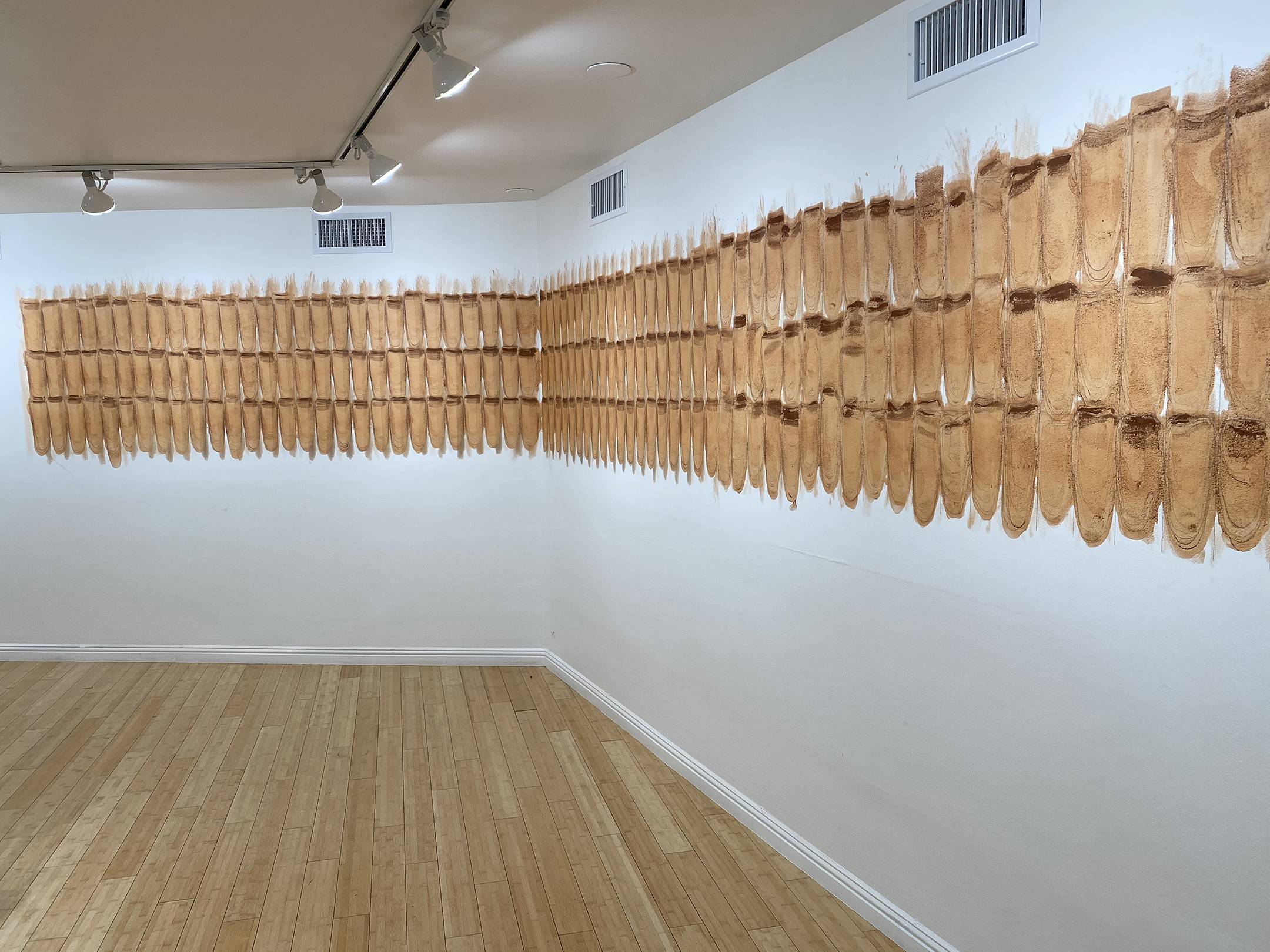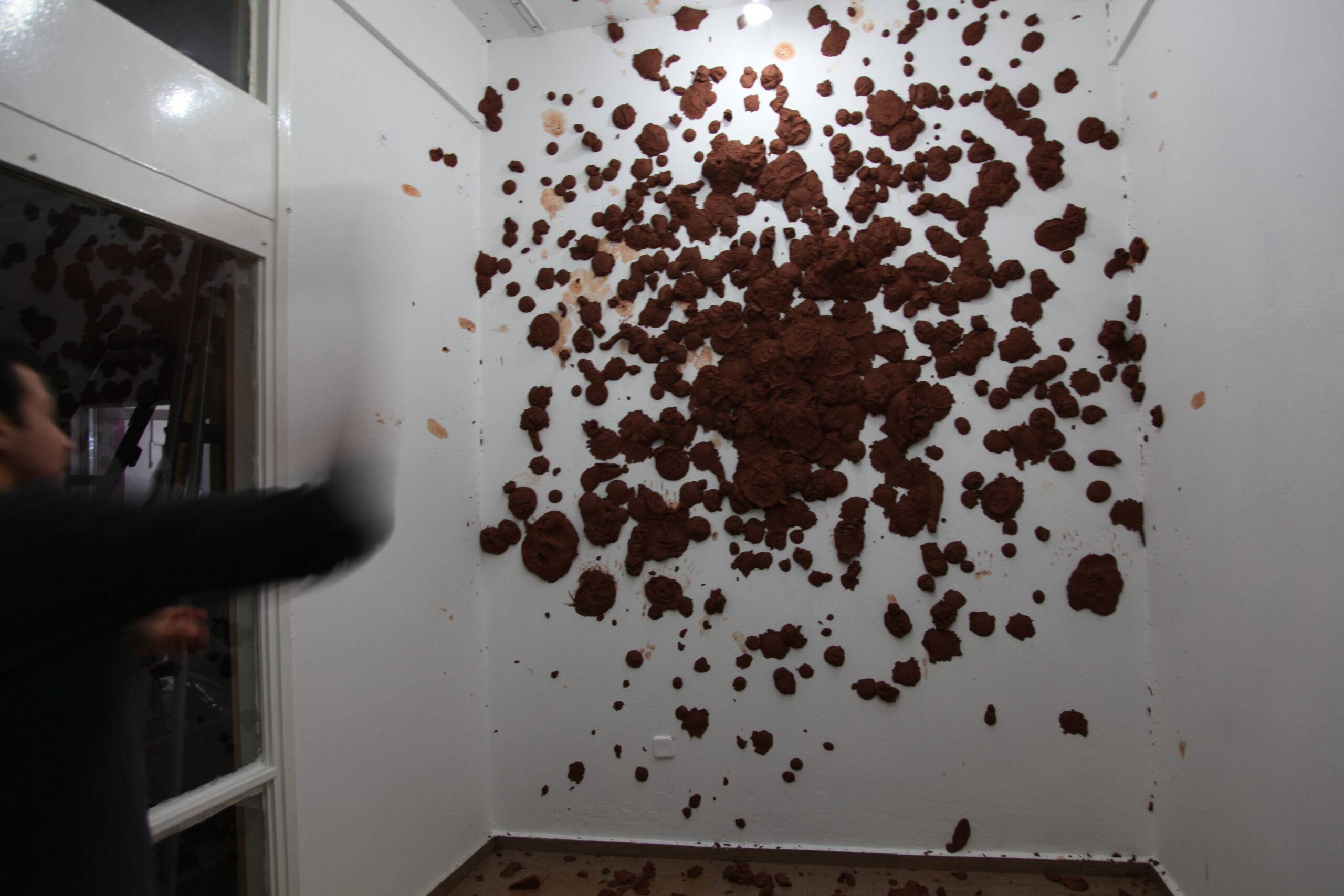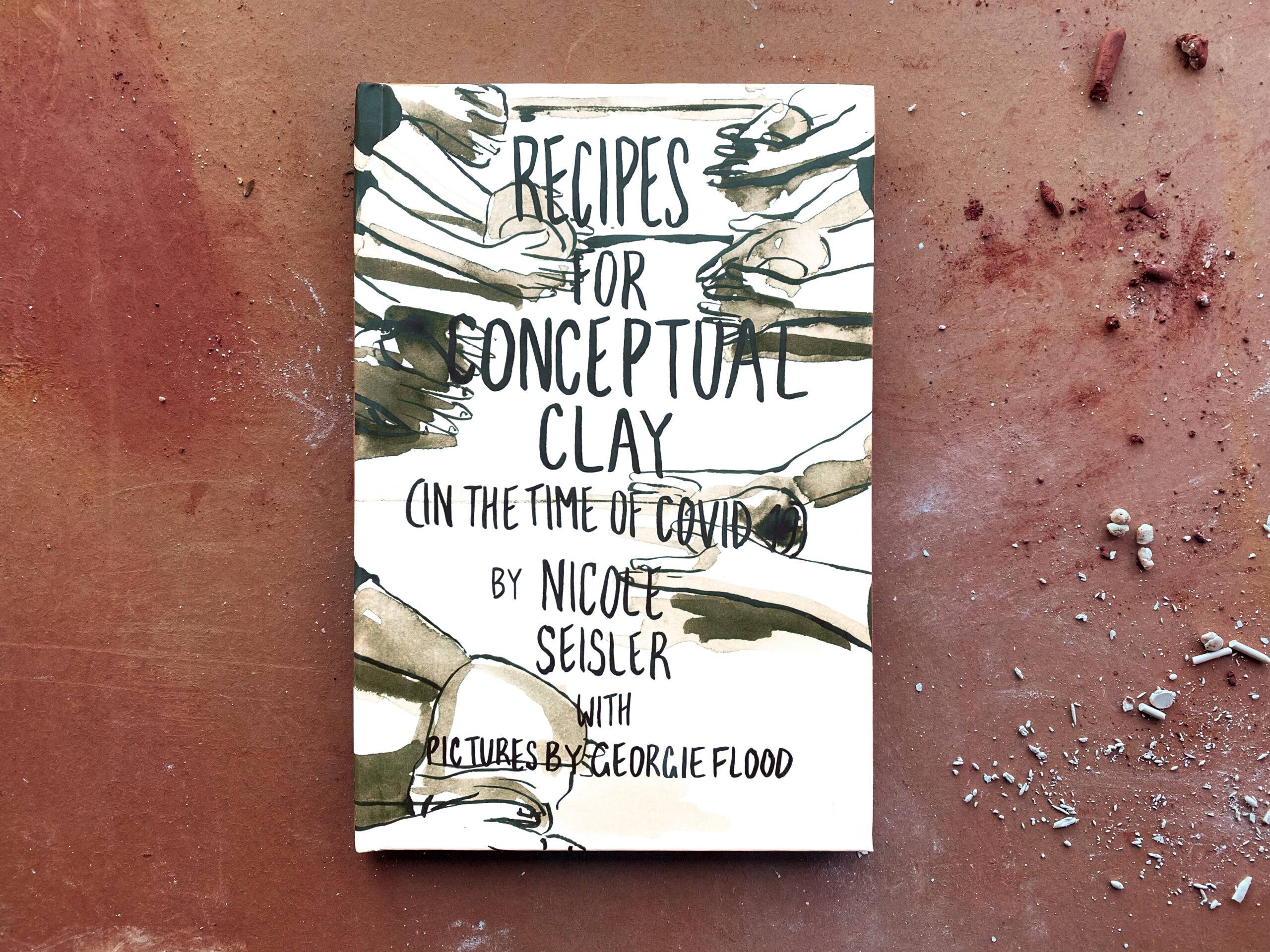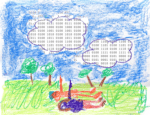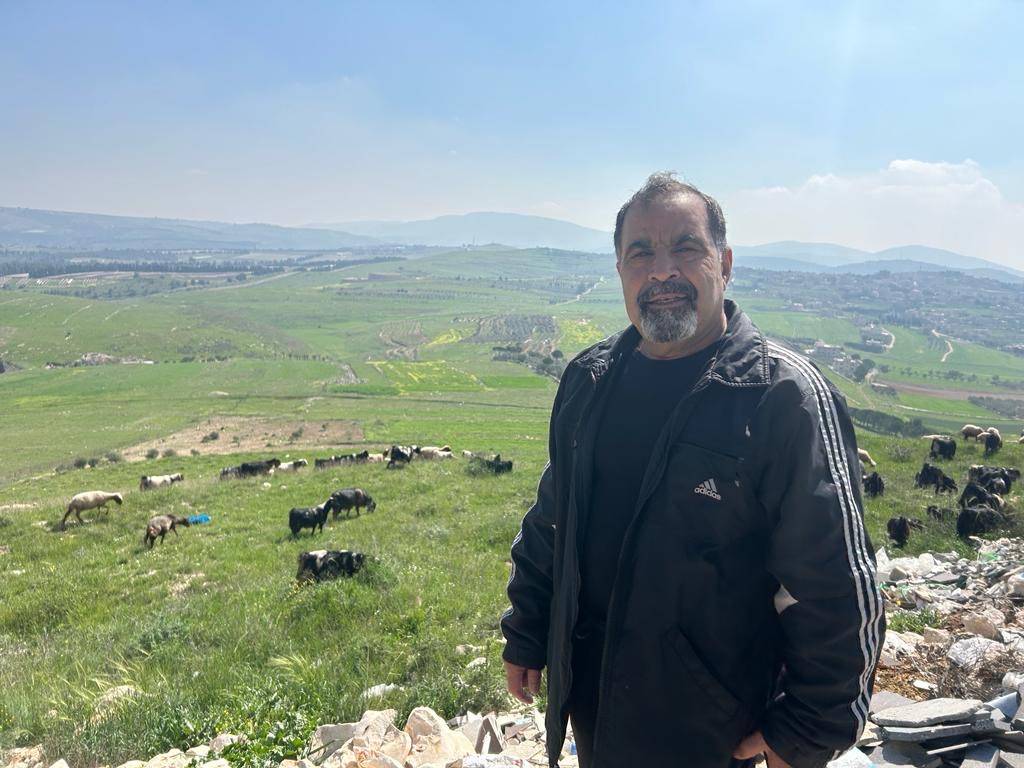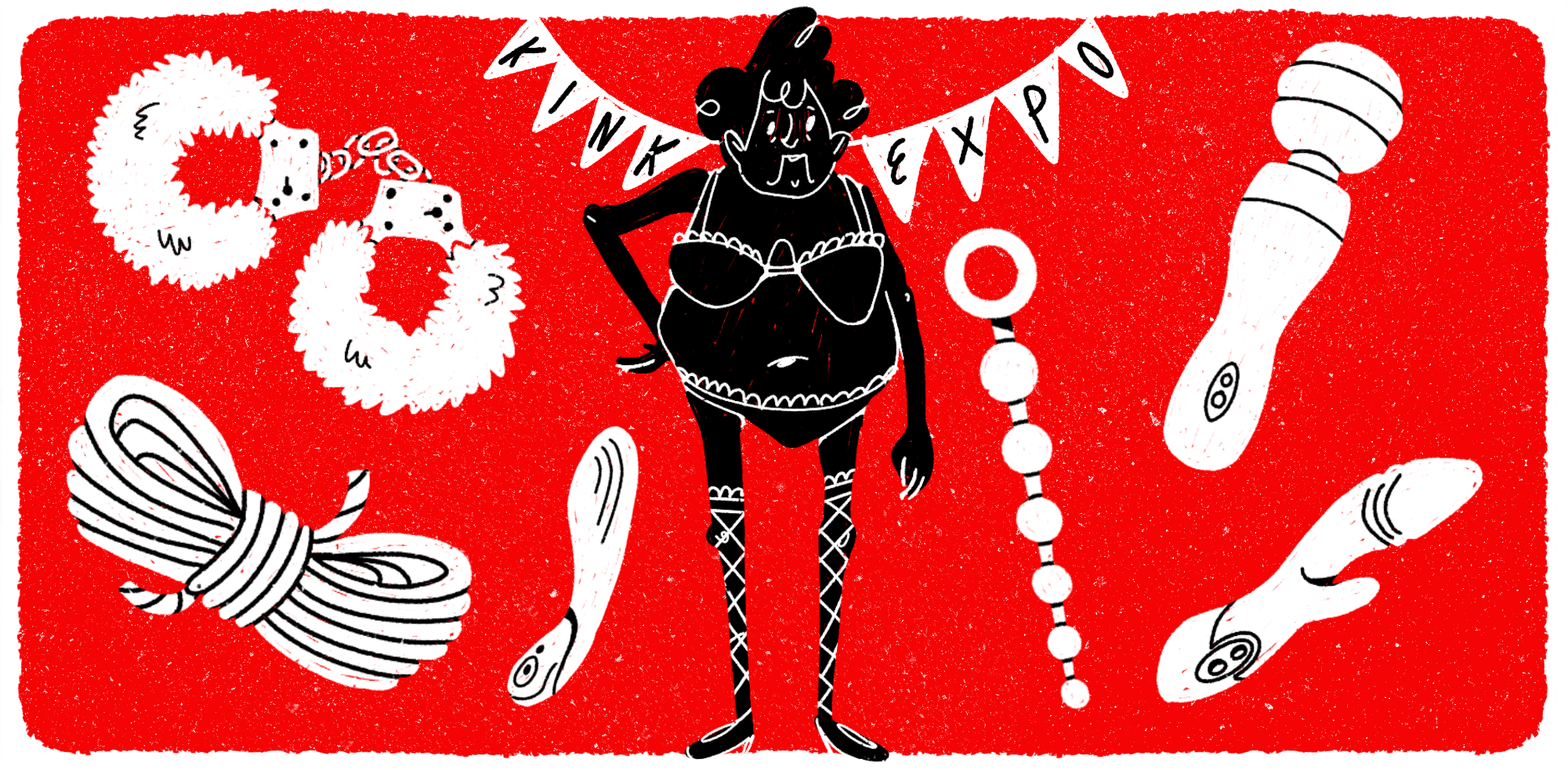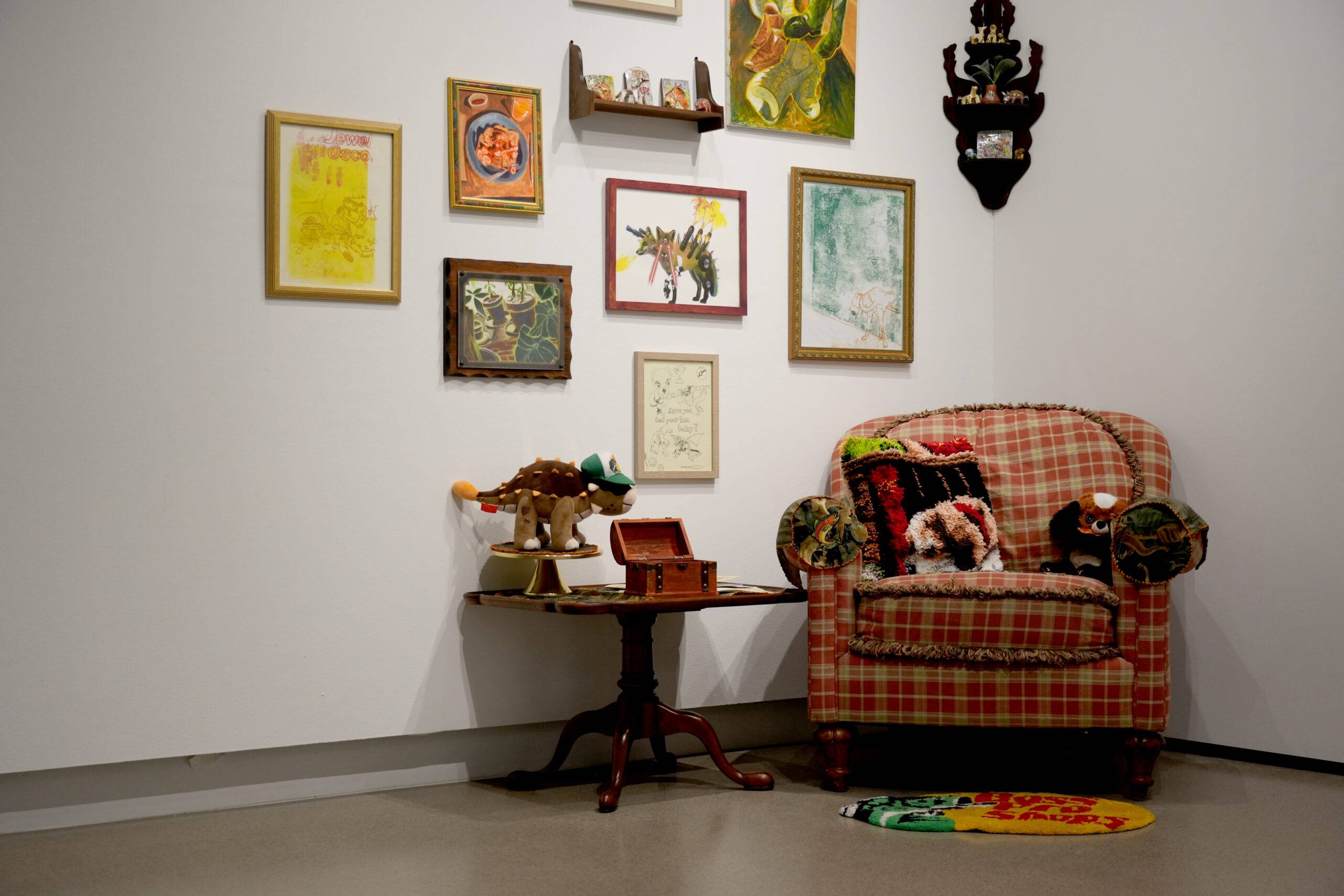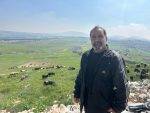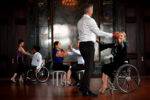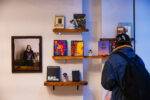“Wedging clay is the most foundational action you can perform into clay,” Nicole Seisler (MFA 2011) tells me recently over video call. “Kneading to remove air bubbles and align its particles prepares clay to function the way you want it.” To prepare her clay, Seisler wedges one hundred times; since graduating from SAIC’s ceramics program, she has taught over seven hundred students to wedge one hundred times. The fact that every student wedges differently thrills her.
Seisler’s ongoing project, “Preparing” investigates the concept that ceramicists, when given the same wedging instructions, will nonetheless present uniquely prepared clay. For a recent installment, Seisler invited fifteen former students to Craft Contemporary in Los Angeles. In the gallery, each student’s wedged clay covered the walls. The effect is painterly and intimate, with each student’s clay containing their signature preparation.
“Part of the reason I teach rules is for people to know when to break them,” she says. As an undergraduate at the School of the Museum of Fine Arts, Boston, Seisler had a formative moment in a drawing class. Seisler recalls the professor saying, “The definition of drawing is very broad, Nicole. Why don’t you bring some clay here?” The invitation catalyzed Seisler’s realization that clay “doesn’t have to be in the basement, doesn’t have to be rigidly defined.” In the drawing class, she started flinging clay through the air at a target on the wall.
Years later and across the world at Flash Atolye in Izmir, Turkey, Seisler orchestrated clay throwing during the opening of the exhibition, “Moment to Moment.” Seisler facilitated remotely, while Friat Erdim and Olivia Valentine worked on site. At the time, in 2010, “Skyping into an opening was a big deal.” Seisler went to a Starbucks to make sure she had good internet. All 175 kilos of clay were chucked and stuck to the wall by the end of the opening.
“Like a ball of wet clay pressed into your hand, the present can be a sticky thing,” Seisler writes of “Moment to Moment.” “Like a ball of wet clay clumsily hurling through the air, the path of our movement forward is shifting and irregular. Like the surprising texture of wet clay splattering against a wall, the future is unknown. Everything is temporary: the wet clay hardens, peels and falls, thereby revealing a future that has already become a past.”
Seisler sees her practice as a tripod of making, teaching, and curating/directing. As a teacher, she’s always bringing her own research and ideas into the classroom to provide parameters to “push up against” so that students can “define and figure out their own voices.” She creates instructions for people to contemplate the conceptual underpinnings of ceramics. Over the past few years, she developed a set of “experimental and experiential exercises” that culminate in the cookbook-styled, “Recipes for Conceptual Clay (in the time of Covid-19).” Illustrated by Georgie Flood, the book allows ceramicists to change the recipe “according to the availability of space, materials, tools, and their own particular tastes.”
This approach to ceramics, with its focus on concept, proved especially timely in March 2020 as universities suddenly switched to remote learning. “It was only week four or five of the semester,” Seisler remembers, “So there were a bunch more weeks to go.” Ceramics professors in Seisler’s social networks were freaking out, stunned that screens filtered their tactile teaching. Seisler, meanwhile, was “excited in a way.” Because the tools shifted so dramatically, “maybe ceramics teachers will stop focusing on all the technical,” she thought. She was disappointed to find that most teachers invested in cameras and lighting, in effect, doubling down on technique.
Seisler pioneered a different route. “Each week I would take stock of circumstances, what we were dealing with, what I was dealing with,” and through clay, “develop exercises to deal with events going on.” Her students did the exercises offline, and then would gather online to discuss. Seisler lights up as she explains that today, “people are teaching from [Recipes for Conceptual Clay]. People I don’t know, have never met before.”
Seisler’s excitement reminds me that her career is young. This is easy to forget, as she is founder and director of A-B Projects, a space in downtown LA for “exhibitions and critical dialogue that expand and redefine the field of ceramics.” Founded in 2015, A-B Projects is named after the first car Seisler bought, August Beater, from an SAIC student while living in Chicago. The car didn’t quite get Seisler from point A to point B; she left the car in Oregon upon moving from Seattle to Los Angeles for a teaching position at Scripps College.
The Scripps position gave her a studio space in Claremont, California, 35 miles from downtown LA. Seisler had already secured a studio space downtown with fellow SAIC grads, so she decided to use the free real estate in Claremont for a gallery. The gallery became a powerful teaching tool: Seisler curated four exhibitions per semester, the exhibitions inspired curriculum, the artists spoke in class, the class held intense discussions about the exhibitions.
The Scripps position was a three-year contract. When that expired, Seisler “had to decide if [the gallery] was a short or long term project.” Seisler decided it was “crucial,” so she set about converting her downtown studio. Seisler “built some walls to make the front of the studio a gallery,” and kept the back to herself. The current show at A-B Projects is her thirty-third curation.
Visitors of A-B Projects often have an epiphany on their third or fourth visit: Does this gallery only show ceramics? A-B Projects elevates not only the perception of the medium, but also the discourse, by hosting State of Ceramics Conversations. These are “non-hierarchical, democratic conversations” between people of all levels of ceramics experience. State of Ceramics led to Studio Sessions which are “not exactly class or workshop,” but “more like a jam session,” according to Seisler. Up to ten people gather to experiment with clay while delving into a particular topic.
These educational arms of A-B Projects grew into an open source curriculum for conceptual ceramics available on its website. Lately, Seisler has developed an affordable ceramics certificate program intended for a wide range of people called ABCC. For a year, the ABCC participants meet with advisors, attend Studio Sessions and State of Ceramics Conversations, while developing a curriculum that suits their needs. Unique to ABCC, the certificate “does not not hinge upon specialized facilities,” but rather, “what you have access to,” such as a kitchen, studio, or shed.
Rows of palm-sized, teardrop-shaped clay framed Seisler’s video background. “Preparing” creeps into her dining room, onto the walls. Thinking about the individual’s influence on clay, Seisler facilitates agency and autonomy across ceramics.
Michaela Chan (MFAW 2023) is cartwheeling. She’s the News/SAIC editor. See more of her work at www.michaelachan.com.


